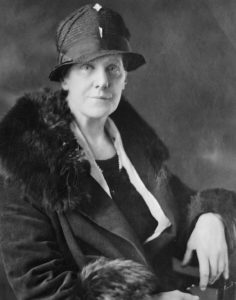-
Halloween
- The Story Behind Halloween – Lesson
- The Story Behind Halloween – Quiz
- Are You Too Old To Go Trick-Or-Treating? – Lesson
- Look out for the Blue Pumpkin – Lesson
- Is the White House Haunted? – Lesson
- Is the White House Haunted? – Quiz
- Mummies Discovered in Egypt – But That’s Nothing to Fear – Lesson
- Salem Witch Trials: When Being Called a Witch Meant Death – Lesson
- Halloween Around the World: It Isn’t Just Costumes and Candy – Lesson
- Halloween Around the World: It Isn’t Just Costumes and Candy – Quiz
-
Thanksgiving
- The Evolution of Thanksgiving – Lesson
- The Evolution of Thanksgiving – Quiz
- The Political Roots of Thanksgiving – Lesson
- The Political Roots of Thanksgiving – Quiz
- Turkey for Thanksgiving – But Why? – Lesson
- Turkey for Thanksgiving – But Why? – Quiz
- This Thanksgiving, Consider Helping the Less Fortunate – Lesson
-
Christmas
-
Easter
- Good Friday: Christ Carried Sin to the Grave – And Left It There – Lesson
- Good Friday: Christ Carried Sin to the Grave – And Left It There – Quiz
- Easter Traditions: From Rabbits to Egg Jarping – Lesson
- Easter Traditions: From Rabbits to Egg Jarping – Quiz
- Easter Monday and Egg Rolling at the White House – Lesson
- Easter Monday and Egg Rolling at the White House – Quiz
-
Federal Holidays and Observances
- New Year’s Day: Just as Political as Anything Else – Lesson
- This Presidents’ Day, Let’s Remember the Weird – Lesson
- Astounding Facts about US Presidents – Lesson
- Astounding Facts about US Presidents – Quiz
- Memorial Day: A Time of Honor and Respect – Lesson
- Memorial Day: A Time of Honor and Respect – Quiz
- From Decoration Day to Memorial Day – Lesson
- From Decoration Day to Memorial Day – Quiz
- Who Was the Poppy Lady, Moina Belle Michael? – Lesson
- Who Was the Poppy Lady, Moina Belle Michael? – Quiz
- The Origins of Flag Day – Lesson
- The Origins of Flag Day – Quiz
- America’s Flag – An Evolved Banner for an Ever-Changing Country – Lesson
- America’s Flag – An Evolved Banner for an Ever-Changing Country – Quiz
- Celebrating the 4th of July – Lesson
- Celebrating the 4th of July – Quiz
- Who Should We Thank for Labor Day? – Lesson
- Who Should We Thank for Labor Day? – Quiz
- Constitution and Citizenship Day – Lesson
- Constitution Day – The First Day of Constitution Week – Lesson
- Constitution Day – The First Day of Constitution Week – Quiz
- The Political Origins of Columbus Day – Lesson
- The Political Origins of Columbus Day – Quiz
- Columbus Day or Indigenous Peoples’ Day? – Lesson
- Columbus Day or Indigenous Peoples’ Day? – Quiz
- Veterans Day: A Day to Honor Those Who Served – Lesson
- Veterans Day: A Day to Honor Those Who Served – Quiz
-
Other Traditions
- Valentine’s Day Love Poems – Lesson
- Love Poems for Valentine’s Day – Lesson
- Who Was St. Valentine? – Lesson
- Who Was St. Valentine? – Quiz
- No Love for Valentine’s Day in the East – Lesson
- No Love for Valentine’s Day in the East – Quiz
- Beware the Ides of March – But Why? – Lesson
- Beware the Ides of March – But Why? – Quiz
- St. Patrick’s Day: A Celebration of the Irish – Lesson
- St. Patrick’s Day: A Celebration of the Irish – Quiz
- May Day: Dancing ‘Round the Maypole – Lesson
- May Day: Dancing ‘Round the Maypole – Quiz
- Cinco de Mayo: Celebrating Mexico’s Victory in Puebla – Lesson
- Cinco de Mayo: Celebrating Mexico’s Victory in Puebla – Quiz
- Mother’s Day: The Anti-War Effort Turned Holiday – Lesson
- Mother’s Day: The Anti-War Effort Turned Holiday – Quiz
- Father’s Day: More Than Just a Day for Ties – Lesson
- Father’s Day: More Than Just a Day for Ties – Quiz
- Presidential Fathers: Responsible for Their Kids and the Country – Lesson
- Presidential Fathers: Responsible for Their Kids and the Country – Quiz
- Proof of the Hanukkah Story Found? – Lesson
- Proof of the Hanukkah Story Found? – Quiz
Mother’s Day: The Anti-War Effort Turned Holiday – Lesson

Anna Jarvis (Getty Images)
How Mother’s Day began.
Mother’s Day – It comes every year in America on the second Sunday of May.
Its evolution took a long time, starting with ancient Greeks hosting festivals in honor of mother goddesses Rhea and Cybele. Other celebrations took place in different cultures, including “Mothering Sunday” in medieval Britain. This tribute occurred on the fourth Sunday of Lent, when the straying faithful would return to the church of their childhood for a special service. Children would present tokens of appreciation and handpicked flowers to their moms. Eventually, this practice died out, but it was brought back in the 1910s by a lady named Constance Adelaide Smith. Even though the original Mothering Sunday event was a Christian event, Smith was inspired by an American – Anna Jarvis – to bring back the holiday as a general celebration of mothers.
Mothers Working for Peace
The American version of Mother’s Day came from a protest of the Civil War. Ann Marie Reeves Jarvis was a devout Methodist who defied both sides of the war by giving aid and support to soldiers and their families no matter which side they were from. She did this through her Mothers’ Day Work Clubs. The clubs were originally formed with local churchwomen to teach new mothers how to raise children, but the war meant they were needed for other jobs, too. The women worked as cooks, cleaners, doctors, and nurses.
In the summer of 1865, Jarvis organized a Mothers’ Friendship Day at the courthouse in Pruntytown, Pennsylvania, to bring together soldiers and neighbors of all political beliefs. There were fears the day would end in violence, but it went better than anyone expected and became an annual event in Pennsylvania.
Julia Ward Howe, the anti-war activist who penned the “Battle Hymn of the Republic,” began promoting Mother’s Peace Day in 1872. As with Jarvis, the goal was unity after the war, and the movement asked that people gather, pray, and listen to lectures in churches or social halls.

(Photo by Tayfun Coskun/Anadolu Agency via Getty Images)
Ann had a daughter, named Anna Jarvis. It was Anna who was inspired by her mother’s community service, and set out to make Mother’s Day a national holiday.
Anna was reportedly moved by a prayer given by her mother during a Sunday School service, which said:
“I hope and pray that someone, sometime, will found a memorial mothers day commemorating her for the matchless service she renders to humanity in every field of life. She is entitled to it.”
Anna Jarvis stayed close with her mother. In 1908, three years after Ann died, Anna gave a speech at the John Wanamaker Department Store in Philadelphia. Billed as a day to honor the sacrifices a mother makes for her children, the store event was a success that drew thousands of celebrants.
Ruined by Commercialism?
Buoyed from success, Jarvis hoped to make the holiday a national celebration. She began a letter-writing campaign that involved every state. Persistence paid off, and President Woodrow Wilson deemed it an official national holiday – the second Sunday of each May – in 1914.
Greeting card suppliers, florists, and other merchants seized on an opportunity to make a dollar. Unfortunately, Jarvis’ holiday became, in her eyes, a spectacle. She was upset by the money-making side of the holiday, and threatened to end the day entirely:
“To have Mother’s Day the burdensome, wasteful, expensive gift day that Christmas and other special days have become, is not our pleasure. If the American people are not willing to protect Mother’s Day from the hordes of money schemers that would overwhelm it with their schemes, then we shall cease having a Mother’s Day—and we know how.”
Still, it was rumored that Jarvis only became famous for the holiday by always writing “Founder of Mother’s Day” after her signature.
Today, Americans spend billions of dollars on gifts for their moms each May, with greeting cards and flowers the being most popular presents. The holiday may not be what Anna Jarvis hoped for, but it has made sure we all take a moment to ponder the sacrifices our own mothers have made.